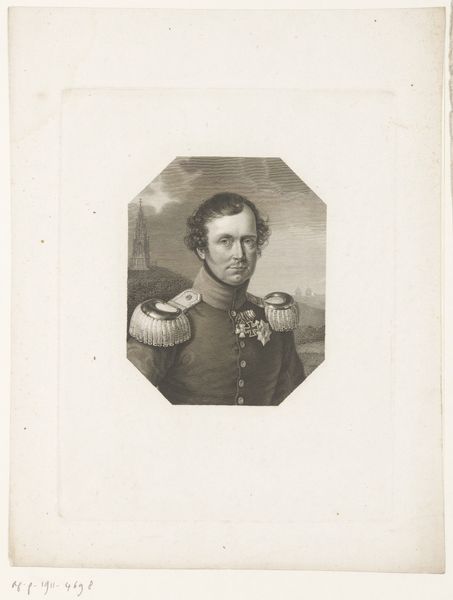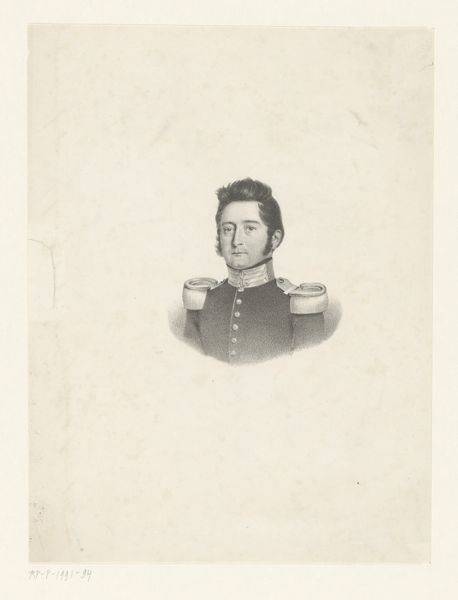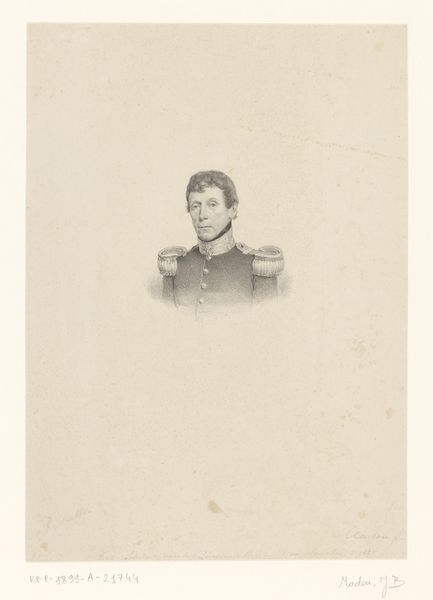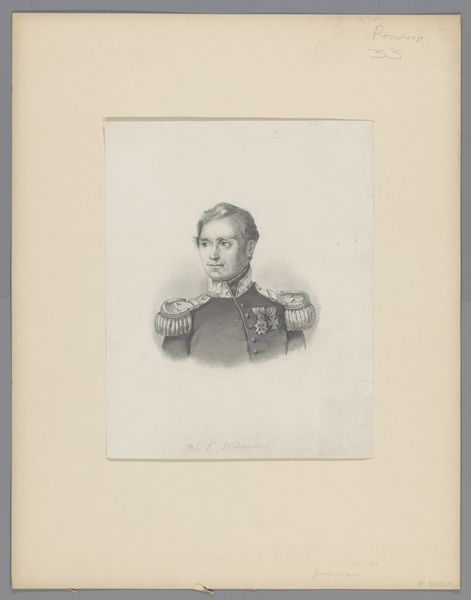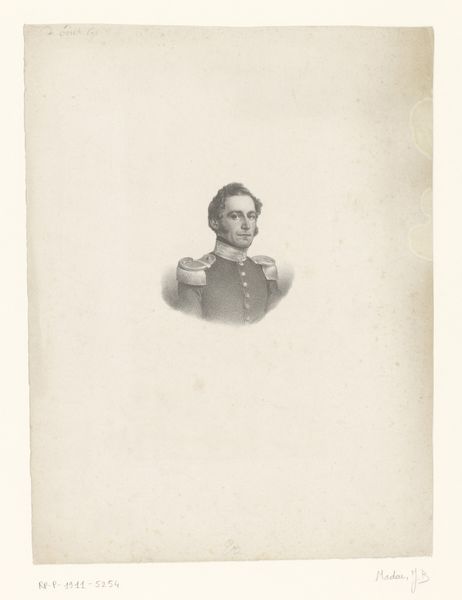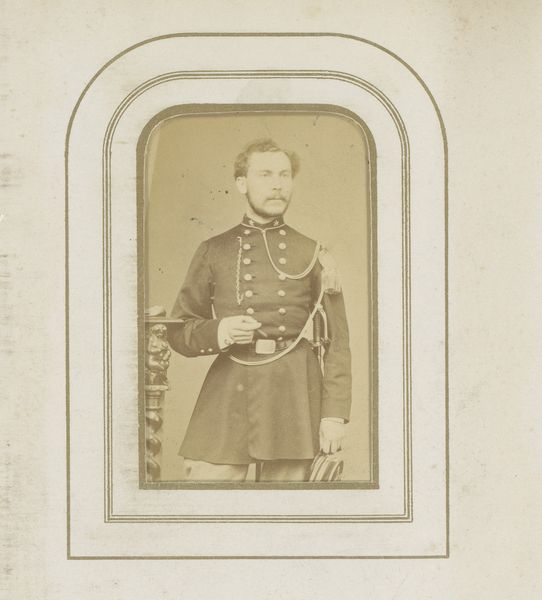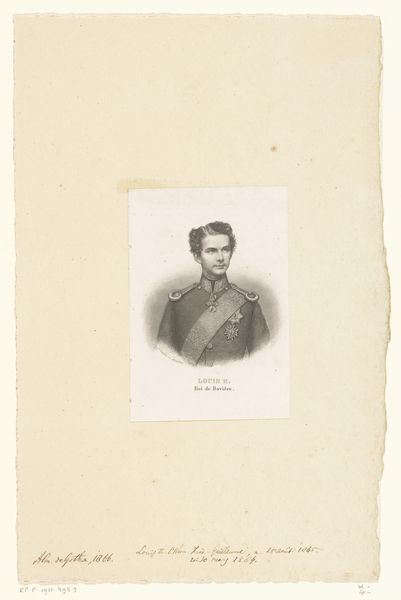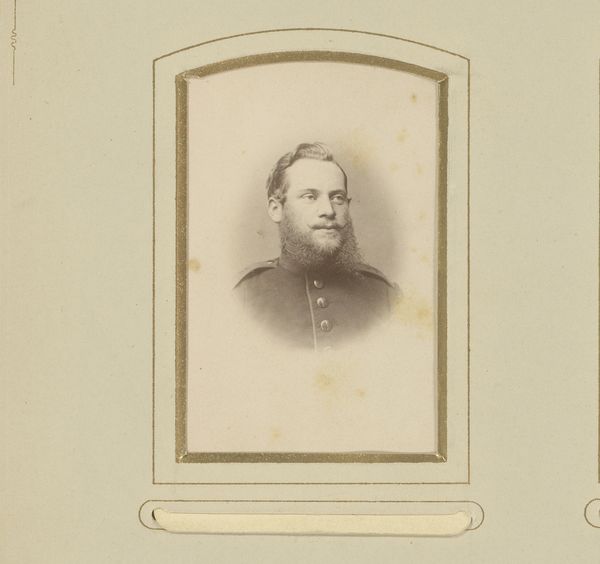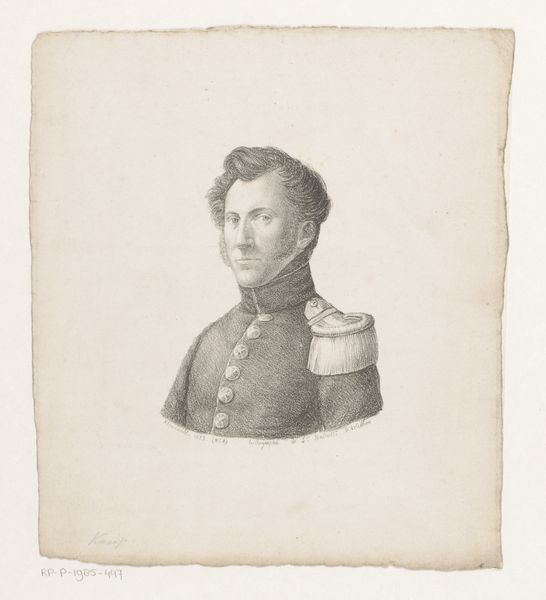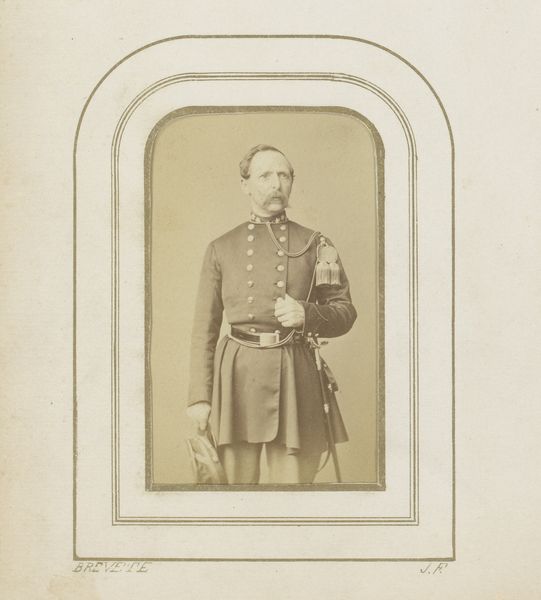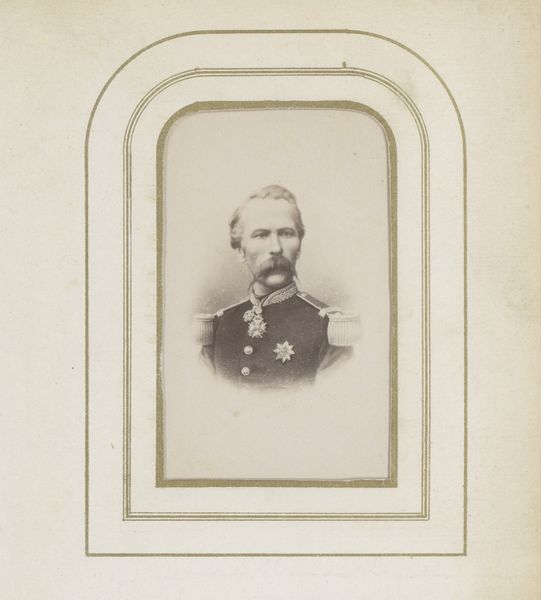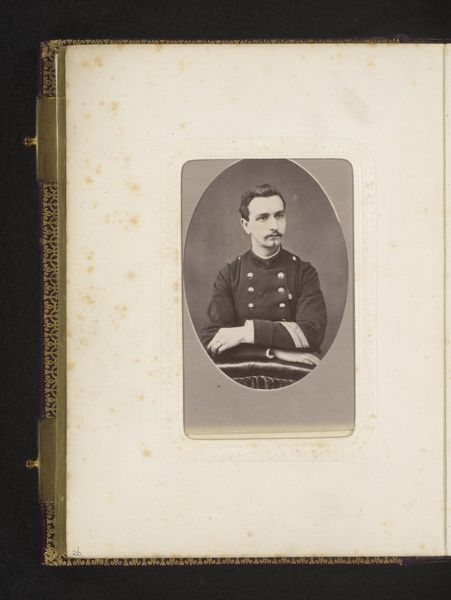
drawing, print, paper, ink, engraving
#
portrait
#
drawing
#
neoclacissism
# print
#
paper
#
ink
#
engraving
#
monochrome
Dimensions: height 105 mm, width 71 mm
Copyright: Rijks Museum: Open Domain
Editor: This is a monochrome engraving, a print on paper titled "Portret van Frederik Willem III van Pruisen," dating sometime between 1797 and 1836 by Johann Friedrich Bolt. It's a fairly small, formal portrait. I notice the stark, almost severe, quality of the image. What jumps out at you? Curator: The Iron Cross immediately commands attention, doesn’t it? Consider what that symbol communicates. It signifies military honor, of course, bravery and devotion to Prussia. But it's also evocative of a very specific period of Prussian history, think of the Napoleonic wars and Prussia’s eventual rise to power. Doesn't the presence of the Iron Cross carry with it whispers of those struggles, anxieties, and ambitions? Editor: Absolutely. It feels very deliberate, as if the artist wanted to associate Frederick Willem III with strength. And isn't the monochrome palette doing something similar, lending it gravitas? Curator: Precisely! And that's a hallmark of the era’s Neoclassical movement, drawing on those values of Republican Rome and Greece. Images like this played a role in nation building. These prints circulated widely and served a critical role in shaping public opinion, and building that nascent Prussian identity. He isn't just a man; he’s an icon, representative of an ideal, embedded within the public consciousness. Does the overall image of him align with the message and symbol displayed? Editor: That’s insightful. So, looking beyond just the face, we see how an image, even a seemingly simple portrait, is actually steeped in coded messaging, a carefully constructed representation intended to build a narrative. Thank you. Curator: My pleasure. Images always hold more meaning than is seen on the surface, when decoded correctly!
Comments
No comments
Be the first to comment and join the conversation on the ultimate creative platform.
